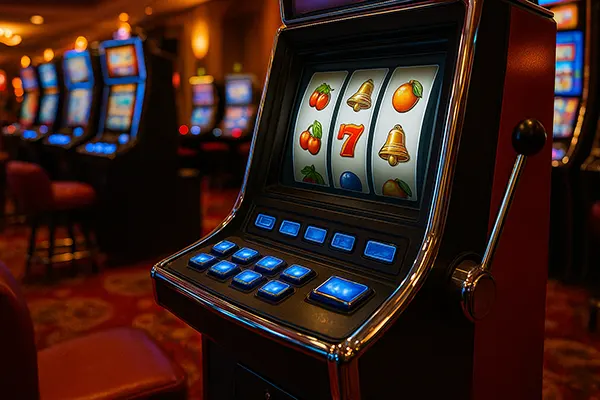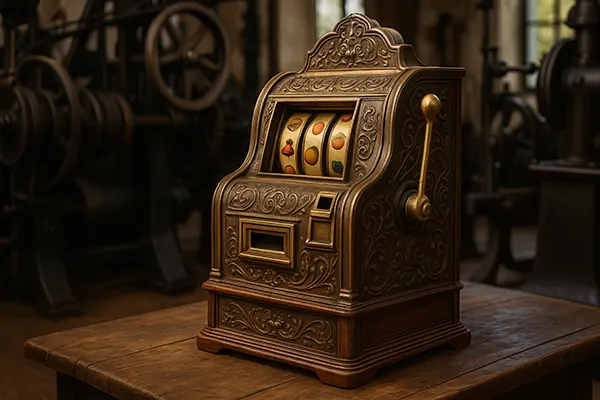The Industrial Revolution marked a transformative period in human history, radically reshaping the world’s economic, social, and technological landscape. Among its less discussed but equally fascinating outcomes is the development of mechanical slot machines. This article explores how industrial innovation laid the groundwork for the modern gambling industry, tracing the evolution of these iconic machines from their rudimentary origins to more advanced forms by the early 20th century.
Technological Advancements Fuelled by the Industrial Revolution
The late 18th and 19th centuries saw the rise of mass production, mechanisation, and engineering breakthroughs. These innovations not only impacted manufacturing but also seeped into the realm of entertainment and leisure, paving the way for coin-operated machines. The widespread use of gears, springs, and levers in industrial machinery directly influenced the internal mechanics of early gambling devices.
Innovators such as Charles Fey, often credited with creating the first modern slot machine in 1895, were heavily influenced by the mechanical expertise and parts availability that emerged during this era. The Liberty Bell, Fey’s invention, functioned using a complex system of spinning reels and automatic payouts, which would not have been feasible without prior industrial developments.
Furthermore, increased literacy and education during the industrial period encouraged technical experimentation. Engineers and mechanics who once worked on factory machines began applying their skills to other industries, including entertainment. This crossover was instrumental in creating the precision mechanisms needed for reliable slot machine operation.
Materials and Manufacturing Processes
The growth of steel production, precision machining, and tool standardisation played a crucial role in the early production of slot machines. With materials like cast iron and steel becoming more accessible and affordable, it became possible to manufacture durable and tamper-resistant gaming devices. These innovations helped establish player trust and regulatory interest.
Industrial techniques also enabled uniformity and replication. Instead of handcrafted machines, developers could now produce identical units in larger quantities, which was essential for their commercial spread across saloons and gaming halls. This mass production would later support the standardisation of slot games and legal frameworks.
Improved printing and engraving technologies, another gift of the industrial age, also allowed for the production of visually engaging slot machines. Painted symbols on reels and decorative casings made the machines more attractive, increasing player interaction and profitability for businesses.
The Emergence of Coin-Operated Machines
The concept of coin-operated devices gained momentum during the latter half of the 19th century. Initially used for vending and music, these mechanisms soon found their way into gaming. The industrial revolution introduced mechanisms capable of detecting coin size and weight, thereby enabling automated play and payouts — the hallmark of the slot machine.
By the 1880s, machines such as the “Horseshoe Slot” and trade simulators had already become commonplace in American saloons. These early forms laid the foundation for more sophisticated designs that would eventually offer cash payouts, a feature that would revolutionise casual gambling.
As a result of industrialisation, gaming devices evolved from novelty curiosities into dependable income generators. Entrepreneurs saw their commercial potential and rapidly expanded their reach, embedding the concept of chance-based play into everyday culture.
Legal and Cultural Implications
The popularity of slot machines sparked debates about regulation and morality. Governments, witnessing the machines’ spread and profitability, began imposing restrictions and licencing requirements. These actions mirrored the broader industrial-era trend of regulating new technologies to balance innovation with social responsibility.
Despite legal obstacles, the machines thrived, often adapting in form and function to evade restrictions. In some cases, machines were rebranded as “trade stimulators,” dispensing candy or coupons instead of money, allowing operators to legally skirt gambling laws while maintaining customer appeal.
This period also solidified the machine’s image in popular culture. No longer confined to gambling dens, slot machines began appearing in mainstream public venues, symbolising both industrial ingenuity and leisure. Their presence foreshadowed the future ubiquity of electronic gaming terminals in casinos worldwide.

Economic Impact and Global Spread
The proliferation of slot machines significantly contributed to the growth of the gambling industry. Saloon owners and entrepreneurs embraced these machines as consistent revenue sources. This economic potential led to innovations in machine design, payout structures, and player incentives, further integrating slots into public entertainment culture.
As mechanical slot machines gained traction in the United States, their popularity soon crossed borders. Industrialisation’s global reach ensured that mechanical expertise and production methods were adopted internationally. European gaming halls, particularly in the United Kingdom and Germany, began importing or replicating American designs by the early 20th century.
This transatlantic exchange marked the beginning of a truly global slot machine culture, setting the stage for the eventual emergence of electro-mechanical and digital slot technologies. The Industrial Revolution not only created the tools for innovation but also the communication networks to share those ideas across continents.
Transition to Electrical and Digital Eras
By the 1960s, advances in electronics — themselves a result of industrial and post-industrial innovation — began replacing purely mechanical components with electromechanical systems. This transition allowed for more complex gameplay, improved security, and larger jackpots.
The digital revolution that followed brought about computerised slot machines, online platforms, and eventually mobile gambling. However, each of these stages owes a significant debt to the mechanical frameworks laid out during the Industrial Revolution, which proved that automated play and reward could be both technically achievable and commercially successful.
Understanding this lineage helps explain the enduring appeal and constant reinvention of slot machines. What began as a mechanical novelty has become one of the most dynamic segments of the global gambling industry, all thanks to the innovations of a previous century.

